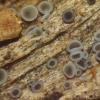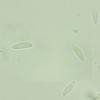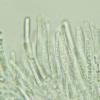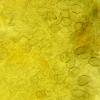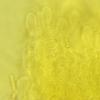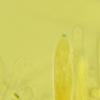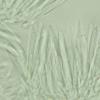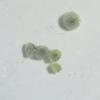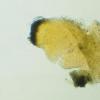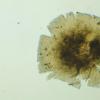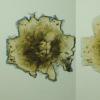
31-08-2025 17:32
 Michel Hairaud
Michel Hairaud
Bonjour, Pas d'identité trouvée pour cette réc

31-08-2025 19:41
Hi to someone.I need to download this issue of Sve

31-08-2025 14:34
Thomas FlammerI have found a Rutstroemia on abt. 2000 m on Alnus

29-08-2025 19:04
Thomas FlammerSpores 21.2 - 26.2 x 8.3 - 11.3 µm - Q: 2.20 - 2.

28-08-2025 17:24
Thomas FlammerI know, that this is not the real topic of this fo

29-08-2025 05:16
 Francois Guay
Francois Guay
I think I may have found the teleomorph of Dendros

27-08-2025 12:02
Pavol PaloHello dear friendsI would like to ask for sharing

25-08-2025 17:37
 François Freléchoux
François Freléchoux
Bonjour,Nous avons trouvé samedi dernier à l'ét
These grew on a fallen, decorticated hardwood branch. The size of the apos is much smaller than of the typical gray ones that I find often on moist wood. There was a faint yellow reaction with 40% KOH, but under the microscope in 3% KOH I didn't notice anything.
Spore measurements: (7.9) 8.9 - 10.7 (10.8) × (2.9) 2.93 - 3.1 (3.2) µm, N = 8.



This is not a good idea.
Mollisia is difficult but among them you can find a lot of interesting species.
Do not cover the preparation with a slide when checking the reaction to KOH. Put a drop of KOH on the slide slide and then dip a piece of ascocarp in it. If the fruiting body reacts to KOH, you will see a yellowish coating around it in a few seconds.
The second way is to apply a drop of KOH to the fruiting body hymenium. If the reaction is positive, the hymenium will change to +/- yellow.
The reaction is visible to the naked eye or after applying a magnifier.
To be sure, it is worth using both methods at the same time
Good luck
Mirek

